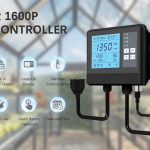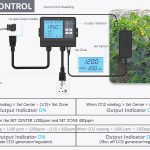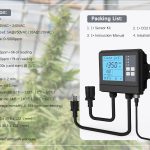
Troubleshooting Guide: Dealing with Common Issues in Caring for Indoor Succulent Plants
Troubleshooting Guide: Dealing with Common Issues in Caring for Indoor Succulent Plants
Indoor succulent plants are a popular choice for home decor due to their unique shapes, vibrant colors, and low maintenance requirements. However, despite their hardy nature, they still require proper care to thrive. Here is a troubleshooting guide to help you deal with common issues in caring for indoor succulent plants:
- Yellowing leaves: If your succulent plant’s leaves are turning yellow, it could be a sign of overwatering or root rot. Allow the soil to dry out completely between waterings and avoid getting water on the leaves. If the problem persists, check the roots for signs of rot and repot the plant if necessary.
- Brown spots on leaves: Brown spots on succulent leaves can be caused by sunburn, pests, or fungal diseases. Move the plant away from direct sunlight and inspect the leaves for pests or signs of fungal growth. Isolate any infected plants immediately and treat them with insecticidal soap or neem oil.
- Slow growth: If your succulent plant is not growing as expected, it could be a sign of inadequate light or nutrient deficiency. Move the plant to a brighter location or provide additional artificial grow lights if necessary. Feed the plant with a balanced succulent fertilizer diluted to half strength once every 2-3 months during the growing season.
- Pest infestations: Keep an eye out for pests such as mealybugs, spider mites, and scale insects, which can quickly destroy your succulent plants. Isolate any infected plants immediately and treat them with insecticidal soap or neem oil. Prevent pest infestations by keeping your plants clean and free of debris.
- Root rot: Succulents prefer well-draining soil and should be watered sparingly. Allow the soil to dry out completely between waterings, and avoid overwatering as it can lead to root rot. Water your succulents from below by placing them in a tray of water or using a self-watering system. Check the roots for signs of rot and repot the plant if necessary.
By following these troubleshooting tips, you can identify and address common issues in caring for indoor succulent plants. Remember to always pay attention to your plants’ individual needs and adjust your care accordingly.
For more information,
GZAIR is a leading manufacturer and provider of gas detection equipment. We have been developing and producing gas detector products for over 10 years. For over 10 years, businesses have come to depend on us for our expertise, quality, and customer service. We’ve worked with engineers, government agencies and business owners from a range of industries to transform the environment they live.
We strive to help people breathe good air through more accurate air quality monitoring and effective air quality control. Our dedicated team has formed an excellent research, development and manufacturing cooperation environment, allowing us to provide advanced and innovative air quality monitors and detectors for customers. We have successively launched a series of products, including CO2 Sensor data loggers, CO gas alarms, Smart air quality monitors, Smart thermostats, Radon detectors, Single & Multi-gas detectors, CO2 Controllers and other detectors.
US: GZAIR
3240 59th Dr E unit 101
Bradenton FL 34203
United States
+1 (941) 704-7797
China: GZAIR
Room 101-1, No.91, Baishashui Road, Changban, Tianhe District
Guangzhou, China
gzairservice@outlook.com
(86)16676796961 (86)18565172441
Business email:
Fiona@gzairtech.net
lynn@gzairtech.net
After sales email:
gzairservice@outlook.com
Tel:
+1 (941) 704-7797
+86 16676796961
+86 18565172441
WhatsApp:
+86 16676796961
+86 18565172441
















